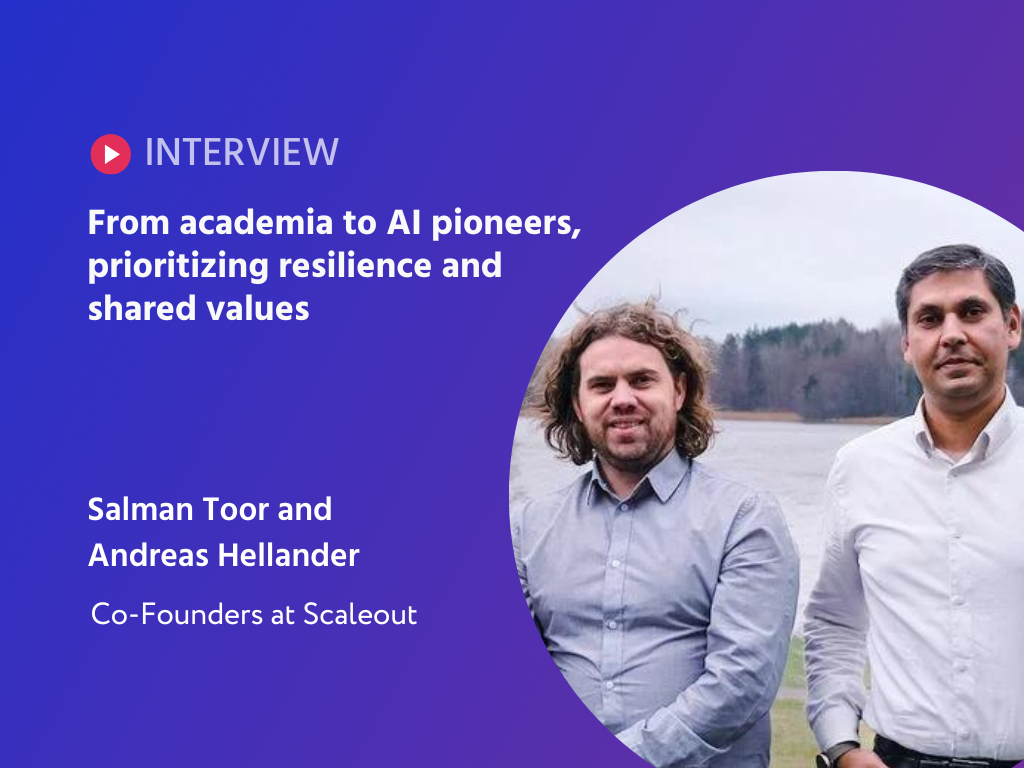Understanding the different types of IT outsourcing is a cornerstone for any business that aims to cut costs without cutting corners. Domestic hiring can be expensive, with recruitment fees consuming up to 25% of a salary. For a $60,000 tech role, outsourcing could reduce these costs by around $18,000. Additional savings from avoiding $20,000 in relocation expenses and $2,500 for workstation setups make its financial benefits even more attractive.
However, choosing the right IT outsourcing model does more than just save pennies—it helps companies solve critical challenges, ensuring quality and timeliness that align with their strategic objectives. This strategy allows business leaders to keep their eyes on the prize, focusing on core business growth while external teams manage the nuts and bolts.What are the different types of IT outsourcing? In the following sections, we will dive deeper into the pros and cons of each IT outsourcing type, such as IT staff augmentation, onshoring, offshoring, nearshoring, and hybrid approaches, helping you navigate the waters and anchor down the most suitable option for your business challenges.
What Is the Aim of IT Outsourcing?
In the United States, 99.9% (over 33 million) of all companies are small, and many of them face the daunting task of managing digital tech projects with limited in-house IT resources. Utilizing various types of IT outsourcing allows these businesses to improve efficiency and gain access to valuable skills that are otherwise unavailable internally.
Here are several key reasons why companies opt for IT outsourcing:
- Eliminates ongoing employee expenses and infrastructure costs;
- Saves on the time and effort of recruitment and resource management;
- Allows businesses to concentrate on core operations while experts handle IT tasks;
- Offers a connection to a vast pool of skilled professionals worldwide.
The goal extends beyond mere staff augmentation—it’s about partnering with trustworthy providers who consistently deliver expertise and innovation, thus improving business operations in competitive markets by incorporating suitable types of information technology outsourcing.
Location-Based Types Of IT Outsourcing
This section explains how adjusting the geographical location of IT services is a fundamental method for businesses to manage costs and optimize other key parameters. All types of IT outsourcing models present distinct advantages and challenges that can significantly impact a company’s efficiency and bottom line.
Onshore Outsourcing
Benefits of Onshore Outsourcing
The onshore outsourcing model involves teaming up with IT providers, including custom web app development services, within the same country, often in the same city or region. This proximity eases communication and coordination, which is ideal for projects requiring frequent partner interaction and intense collaboration levels.
Examples of Onshore Outsourcing
Many U.S. companies choose local tech hubs like Silicon Valley to leverage onshore outsourcing, tapping into proximity advantages and robust tech ecosystems. In the EU, companies might opt for tech-savvy yet cost-effective countries like Romania, Bulgaria, or the Baltic states, enjoying the benefits of geographic, regulatory, and cultural proximity.
Offshore Outsourcing
Benefits of Offshore Outsourcing
Embracing offshore IT services outsourcing models can be a game-changer for businesses looking to minimize costs. By partnering with distant countries having lower operational costs and considerable time zone lags, companies can enjoy substantial cost reductions while accessing a vast talent pool and operating around the clock.
Examples of Offshore Outsourcing
A typical example is a Dutch firm partnering with a software company in India. In this case, while a Dutch firm would typically pay around €68,000 (~$75,000) per year for a software system engineer, similar expertise from India might cost between $25,000 to $35,000 annually, offering substantial savings.
Nearshore Outsourcing
Benefits of Nearshore Outsourcing
Nearshore outsourcing strikes a balance between affordability and convenience, involving partners from neighboring countries. This strategy minimizes time zone differences and facilitates easier travel and better cultural alignment, which are essential for seamless communication.
Examples of Nearshore Outsourcing
Consider a German company collaborating with a Ukrainian mobile tech development firm. This partnership significantly reduces costs as the average salary for a Software Developer is about €64,000 (~$70,000) per year in Germany, while in Ukraine, it can range from $30,000 to $40,000 (equivalent to €33,000 to €44,000) per annum for the same level of skills, simplifying travel for in-person meetings and maintaining manageable time zone differences.
Reshoring
Benefits of Reshoring
Reshoring involves bringing IT services back to the company’s home country, which helps tighten control over processes, enhance quality, protect intellectual property, and ensure compliance with customer expectations and regulatory requirements. Additionally, it can be a strategic move in response to political and security instability, mitigating risks associated with geopolitical turbulence.
Examples of Reshoring
Many American companies, recognizing the high geopolitical risks, have started to withdraw their offshore operations from countries like Russia and China. By bringing these jobs back to the U.S., these firms aim to enhance product quality and customer satisfaction and secure their operations and data amidst increasing international tensions.
Hybrid Outsourcing
Benefits of Hybrid Outsourcing
Hybrid outsourcing combines elements from onshore, offshore, and nearshore models. This approach allows companies to customize their outsourcing strategy to match project specifics and budget constraints perfectly.
Examples of Hybrid Outsourcing
A company could team up with local developers for essential software projects, simultaneously outsourcing web back-end operations and cloud infrastructure management to cloud service providers. This approach shows how IT outsourcing models work by employing platforms like AWS or Azure, which offer scalable and robust digital infrastructure without the direct costs and hassles of maintaining physical servers. These cloud services allow the company to manage costs effectively while ensuring their services are accessible worldwide.
Project Outsourcing
Benefits of Project Outsourcing
Project outsourcing is ideally suited for companies in need of specialized skills on a short-term basis. This strategy is not only cost-effective but also introduces top-tier expertise to drive projects to swift completion. It empowers organizations to keep their core teams focused on primary business goals while outsourcing complex and specialized tasks like IoT software development or advanced DevOps services to seasoned experts.
Examples of Project Outsourcing
Imagine a vibrant tech startup ready to launch its latest Android app but lacking in-house Android expertise. By outsourcing the development to a firm focused on Android custom app services, they can accelerate the app’s market entry dramatically. This partnership enables the startup to harness state-of-the-art technology and seasoned talent, bypassing the need to expand the internal team and incur additional overhead.
| Outsourcing Model | Talent Pool Accessibility | Language & Cultural Alignment | Cost Considerations | Recommended Usage |
|---|---|---|---|---|
| Onshore | Limited to national boundaries, high-quality yet less diverse | Minimal language or cultural hurdles, high compatibility | Highest due to national wage standards | Ideal for projects needing tight collaboration or high compliance with local data security laws |
| Offshore | Broadest access to global talents, cost-effective skill diversity | Considerable language and cultural differences may arise | Lowest, benefiting from economic disparities | Best for budget-sensitive projects with manageable communication hurdles |
| Nearshore | Wider than onshore with better cost-efficiency, moderately diverse | Relatively minor cultural and language differences | Moderate, less than onshore but more than offshore | Perfect for projects requiring a balance between cost, proximity, and ease of communication |
| Hybrid | Mixes all models for tailored skill access and cost efficiency | Dependent on project specifics, highly flexible | Customized to balance quality and expense | Suitable for complex projects needing various expertise levels managed strategically |
| Project Outsourcing | Access to specialized skills for short-term needs | Varies depending on the vendor’s location and project needs | Cost-effective compared to expanding in-house teams | Utilized for specific, time-sensitive projects where specialized expertise is needed temporarily |
Relationship-based IT Outsourcing Models
Relationship-based information technology outsourcing models are crafted to focus on team management, project control, and financial strategies. These models of IT outsourcing are essential for scenarios requiring external IT expertise. We will examine three main IT outsourcing types, detailing their operational mechanics, payment structure, ideal usage scenarios, and advantages.
Staff Augmentation Model
Operational Mechanics
Staff augmentation temporarily enhances an in-house team by adding external specialists. This model is effective when specific skills are needed temporarily to complement the existing workforce.
Payment Structure
Typically billed per hour or workday, allowing for flexible adjustment of labor costs based on the actual work performed.
Ideal Usage Scenarios
Best suited for situations requiring additional manpower to meet pressing deadlines or when urgent replacement is needed due to the sudden departure of key team members, ensuring the project does not stall.
Pros
- Significant cost savings on workspace, hardware, and long-term employee benefits;
- Flexibility to scale up or down as project demands change;
- Quick access to a broad talent pool, introducing fresh perspectives and specialized expertise.
Project-Based Model
Operational Mechanics
The entire project is outsourced to an external vendor responsible for delivering from start to finish. The client defines requirements and scope, while the vendor manages the execution.
Payment Structure
Often based on a Fixed-Price agreement, though Time & Materials may also be used, depending on the project dynamics.
Ideal Usage Scenarios
Appropriate for discrete projects with clear scopes and defined timelines, especially when in-house expertise does not align with project requirements.
Pros
- Clear expectations and timelines set from the start;
- Grants access to turnkey team expertise and a complete skillset;
- Allows internal teams to focus on other critical business functions.
Dedicated Team (Managed Team) Model
Operational Mechanics
Combining aspects of staff augmentation and project outsourcing, this model provides a dedicated team managed by the client but supplied by the vendor. The team operates as an extension of the client’s in-house workforce.
Payment Structure
Payments are usually made according to Time & Materials or per hour, which enhances billing transparency and adaptability.
Ideal Usage Scenarios
Particularly effective for long-term projects that have fluid requirements or when a project is strategic and necessitates close management and integration with the client’s internal teams.
Pros
- Greater control and involvement in project execution;
- Cost-effective solution for managing long-term projects;
- Flexibility in adjusting team size and composition without disrupting core operations.
Comparative Overview of Relationship-Based IT Outsourcing Models
| Outsourcing Model | Core Functionality | Payment Mode | Optimal Use Cases | Key Advantages |
|---|---|---|---|---|
| Staff Augmentation | Augments existing teams with external talent | Charged per hour or workday | Needed to fill gaps for specific skills | Reduces overhead, and provides access to diverse expertise |
| Project-Based | Complete outsourcing of specific projects | Typically Fixed Price or Time & Materials | Projects with clear scopes and defined outcomes | Ensures focused expertise, simplifies management, and frees internal resources |
| Dedicated Team | Provides a managed team that integrates with the client’s staff | Time & Materials or per hour | Long-term projects requiring close oversight | Offers deep control over project execution, adaptable team sizing, and cost efficiency |
How to Choose the Right Type of IT Outsourcing Model for Your Business
Choosing the right IT outsourcing model is vital for aligning external support with your business needs and goals. When evaluating a third-party provider, consider their ability to supply skilled professionals, their track record of success demonstrated through case studies, and their commitment to protecting intellectual property.
- The Scope of Work: Define the complexity and scale of the project. Consider whether the work requires specialized knowledge, such as machine learning development or system engineering, or involves standard technology. This helps determine if a more flexible model or a project-specific team is necessary.
- Budget: Assess your financial constraints to understand which outsourcing model provides the best cost efficiency and favorable rates. Project-based outsourcing might be suitable for fixed budgets, while dedicated teams or staff augmentation could offer long-term value despite higher initial costs. For instance, you might decide to hire Java developers if the project requires specific back-end expertise.
- Level of Control and Flexibility: Evaluate how much direct oversight you require and how frequently you’ll need to interact with the outsourced team. Consider aspects like time zone compatibility. If your project is front-end heavy and needs state-of-the-art frameworks, you might consider, for instance, whether to hire React developers through staff augmentation, where they can work closely with your in-house team.
Discover Temy: Your Strategic Software Development Ally
Temy stands out in the custom software development service landscape, backed by over a decade of delivering groundbreaking solutions. Our robust team of over 100 professionals has successfully catered to more than 80 clients worldwide, turning complex challenges into avenues for growth through innovative technology.
Our core capabilities include:
- IoT, FinTech, E-commerce, and Home Automation, where we develop several customized solutions;
- Proficiency in programming languages and platforms including Java, React, Python, Node.js, ReactJS, and WordPress website development, meeting a diverse range of technical requirements;
- A commitment to meeting client needs with precision, supported by our broad and adaptable technical expertise.
Success Stories
For Otto Wilde Grillers, a leading manufacturer of premium barbecues, we developed an IoT application for smart grill management with a dedicated team of 6 Software Engineers. Using Flutter and NodeJS, the app enhances the grilling experience by enabling remote control and providing recipe management features. This significantly improved customer engagement and satisfaction, showcasing our capability to boost product interactivity and user experiences.
For Keyrock, a FinTech leader in algorithmic trading, we assembled a team of 4 Software Engineers to enhance their trading platform. Utilizing technologies like MongoDB, Rust, Nest.js, Vue.js, GraphQL, and PostgreSQL, we not only upgraded Keyrock’s operational capabilities and UI but also enabled advanced cryptocurrency trading. Additionally, we expanded the Back-End Team and established a QA Department to streamline data processing and ensure consistent product management, significantly boosting platform reliability in the cryptocurrency market.
Conclusion
Choosing the right IT outsourcing model is crucial for aligning with strategic business goals, whether for enhancing operations, tapping into rare expertise, or expanding market competitiveness. Opting for Temy as your software development partner guarantees access to a team dedicated to excellence and innovation.
Contact us today and let our expertise propel your next project to success.
FAQ
covers a wide range of services, including software development, system maintenance, web design, and cloud services. It allows businesses to tap into specialized skills and advanced technology without the overhead. For a detailed list, visit our Services Page.
An example of may be hiring an external agency to manage your company’s cybersecurity. This approach provides access to top-tier expertise and ensures your systems are secure without the need for in-house staff.
involves handling technical services like software development and IT management, while BPO focuses on non-core business activities such as customer support. The primary difference lies in tasks—technical vs. operational—making IT outsourcing models more suited for businesses needing specialized tech solutions.
Costs vary based on the project and location, but outsourcing can typically save 25–30% compared to domestic staffing. By choosing IT outsourcing types, companies can manipulate expenses while accessing global talent.
Different types of IT outsourcing services allow companies to focus on core business goals by cutting costs and accessing global talent. It also provides flexibility and scalability as your business grows.

Discover More Captivating Success Stories:

Revolutionizing Prepaid Credit Markets: Solid World’s Blockchain Innovation for Sustainable Growth and Profitability
Revolutionizing Carbon Markets: Stenver on Solid World's Blockchain-based Prepaid Credit

A spider sense for successful hires
David, Founder of PredictAP, learned firsthand the value of timing

From Rural Roots to Startup Stardom: Branden Neal’s Journey to Revolutionizing Workplace Safety
Unlocking the Entrepreneurial Mindset: Branden Neal's Journey from Rural Maine



